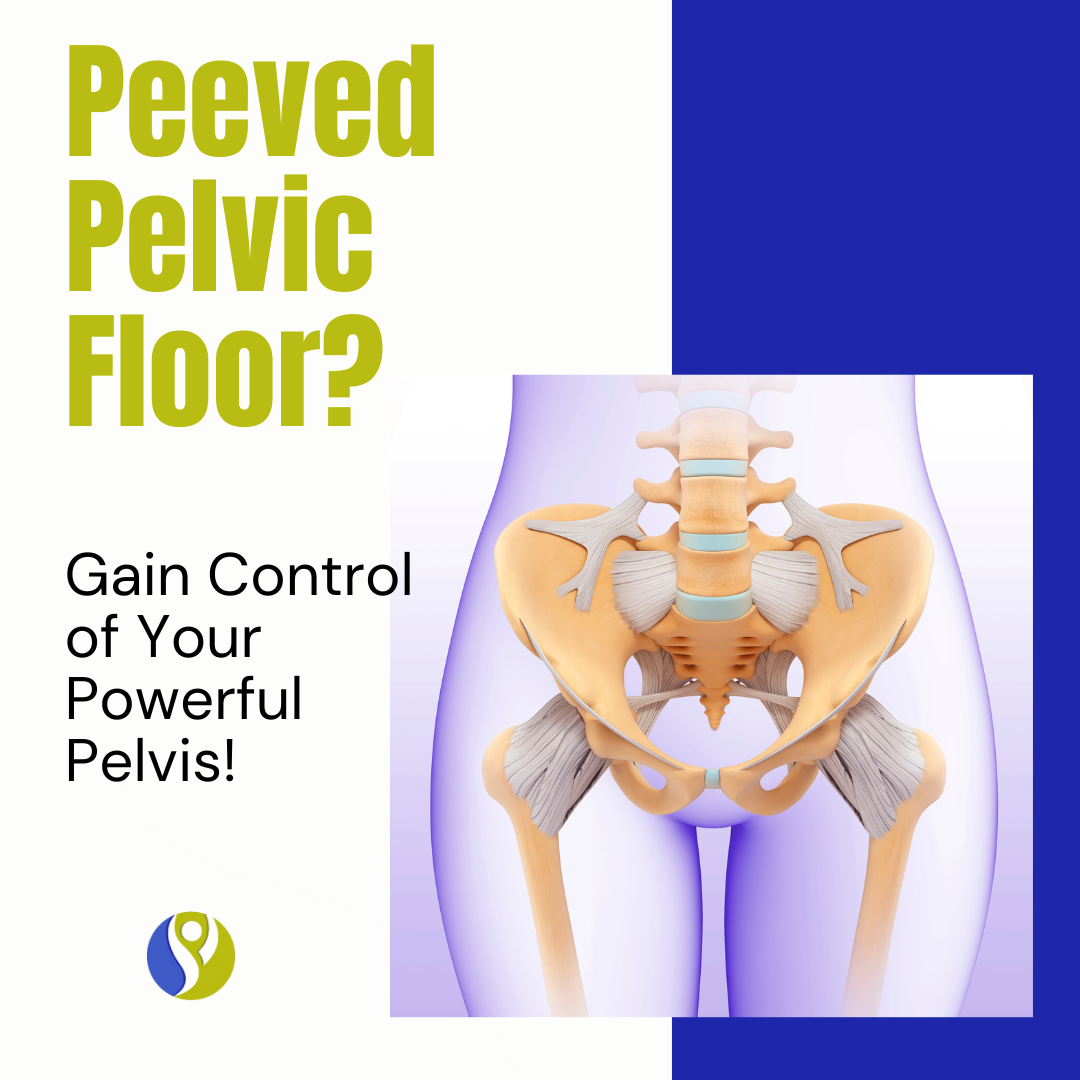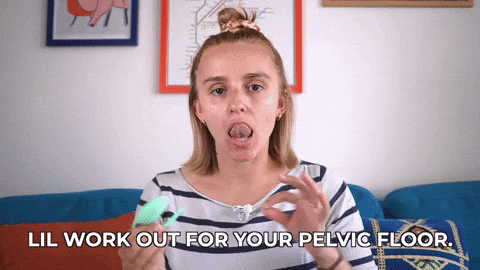Peeved Pelvic Floor? Gain Control of Your Powerful Pelvis!
Our Pelvic What?
The pelvic floor may not be as glamorous as the glutes, but it's the backstage crew keeping our bowels, urine, and reproductive organs from staging a grand exit. If the pelvic floor is too weak, things fall apart. When the pelvic floor is overactive like an overzealous nightclub bouncer, you may get chronic clenching and pain. This post reviews both ends of the pelvic tone spectrum and highlights how conventional treatments (think physiotherapy, biofeedback, electrical stimulation) and yes, chiropractic care, may help restore harmony, sometimes with surprising results.
Anatomy & Function of the Pelvic Floor
Comprised mainly of the levator ani and coccygeus muscles plus fascia, from pubic bone to tailbone, innervated largely by the pudendal nerve (L4‑S4) Verywell HealthNCBI.
Supports bladder, urethra, rectum, uterus/prostate, and provides core stability Verywell HealthMDPI.
Hypotonic/Weak Pelvic Floor: When the Pelvic Floor Goes Soft
Common Conditions:
Stress urinary incontinence – leakage during coughing, sneezing, jumping, due to urethral hypermobility under weak pelvic support WikipediaWikipedia.
Fecal incontinence – insufficient puborectalis tone allows stool escape; pudendal neuropathy from nerve stretch plays a role WikipediaWikipedia.
Pelvic organ prolapse – e.g. uterine prolapse due to weak levator ani and connective tissue, especially post‑childbirth or menopause WikipediaMDPI.
Treatments (Weak Pelvic Floor):
Pelvic floor muscle training (Kegels): 10–15 squeezes, short or held, 3× daily, improves incontinence and sexual function but only when muscles aren’t already tight HealthWikipediaIllinois Chiropractic Society.
Biofeedback & electrical stimulation: Surface or internal EMG helps patients learn correct activation; combining EMG and electrical stimulation shows greater improvements in urinary or fecal incontinence within weeks or months PMCLippincott JournalsWikipedia.
Lifestyle & physiotherapy: posture, weight loss, Pilates, diaphragmatic breathing, hip/glute strengthening Dynamic ChiropracticMDPISELF.
Surgery or devices (pessary, sling) if conservative care fails WikipediaWikipedia.
Hypertonic/Overactive Pelvic Floor: What Happens When It’s Too Tight
Common Conditions:
Pelvic floor overactivity causes pain, difficulty urinating or defecating, dyspareunia, urgency, constipation, genital pain, erectile dysfunction in men NCBINCBIWikipedia.
Hypertonicity in males is often underdiagnosed and may be driven by stress, posture, and prolonged sitting. Business Insider.
Treatment (Too-Tight Pelvic Floor):
Muscle relaxation & stretching, breathing techniques, internal massage, trigger‑point or myofascial release, dilators (for vaginismus) NCBIWikipediaRedditReddit.
EMG biofeedback combined with electromagnetic stimulation reduces muscle hypertonia and pelvic pain scores significantly in women with chronic pelvic pain PubMedPMC.
Avoid Kegels if pelvic floor is tight—they may worsen symptoms without proper assessment New York PostIllinois Chiropractic Society.
Role of Chiropractic Care: Does Alignment Also Align Tone?
Evidence-based chiropractic interventions include:
Myofascial release of pelvic, SIJ, low back, hip fascia to reduce tension in hypertonic patients ChiroUp.
Dry needling (where permitted) potentially helpful in reducing myofascial pelvic floor pain ChiroUp.
High‑velocity, low‑amplitude (HVLA) manipulation, Cox flexion‑distraction and trigger‑point percussion on lumbar‑pelvic joints improve urinary incontinence by restoring muscular balance PMCPubMedChiroUp.
One retrospective case series (21 patients with stress urinary incontinence): 10 fully resolved, 7 significantly improved, 4 slightly improved; gains remained stable over 2–6 years PubMedPMC.
One preliminary study in pregnant women (2nd trimester): a single spinal manipulation increased levator hiatus area at rest—suggesting pelvic floor relaxation—though no effect in non‑pregnant controls PubMed.
Chiropractic Mechanisms:
Manipulation may normalize lumbosacral alignment, reducing articular and neural irritation, improving pelvic floor muscle activation or relaxation as needed PMCPubMedDynamic Chiropractic.
Soft‑tissue therapies, EMF devices (e.g. HEIT, TECAR), shockwave, cupping and even diet coaching sometimes used as adjuncts Dynamic ChiropracticChiroUp.
A Case Study:
A 35‑year‑old male was urinating 20 times/day. He was convinced he had a bladder sentience problem. After endless tests, he discovers the answer to his problem was his pelvic floor muscles were tighter than grandma’s hug. Six months of pelvic therapy (manual release, breathing drills) and POOF, symptoms vanished.
Chiropractic in Practice: The Real‑World Outlook
Chiropractors trained in pelvic floor dysfunction may offer:
Alignment corrections (pelvis, sacrum, lumbar spine) to optimize neuromuscular input to the pelvic floor.
Soft‑tissue and myofascial release around the hips, SIJ, abdominal wall to relieve tightness.
Adjunctive modalities: electromagnetic stimulation, shockwave, cupping, even induction devices where licensed.
Coordination with pelvic floor physios: feedback, exercise programming, neural retraining ChiroUpDynamic ChiropracticPMC.
Remember: Treatment isn’t instant magic. It’s about improving alignment and neuromuscular patterns to help resensitize or strengthen the pelvic floor.
Final Punchline & Takeaways
Weak pelvic floors: think sluggish hammock. Treat with strength training, Kegels (only if relaxed), electrical devices, posture, etc.
Tight pelvic floors: think locked bouncer refusing entry. Treat with release work, breathing, dilators, biofeedback—not strength.
Chiropractic care offers a plausible adjunct, especially for incontinence or pelvic pain, by addressing mechanics, muscle tone, and neural control but should be coordinated with pelvic floor professionals.
Always start with proper assessment (exam, palpation, EMG, ultrasound) because one-size-fits-all exercise can backfire New York PostPubMedNCBIPMCIllinois Chiropractic Society.
References Highlights
StatPearls & NCBI for pelvic floor epidemiology and etiology NCBIWikipedia
PubMed / case series on chiropractic for urinary incontinence PubMedPMC
Preliminary spinal manipulation study in pregnant women PubMed
EMG biofeedback and electromagnetic stimulation trials PubMedPMCLippincott Journals
Reddit patient comments about release and chiropractic when hypertonic RedditReddit
Disclaimer
This is educational and not a substitute for medical or chiropractic consultation. If you're suffering from pelvic floor issues, see a pelvic‑health specialist (chiropractor, urogynecologist, pelvic physiotherapist, pelvic floor physical therapist). Get evaluated before doing any exercise, especially Kegels.





